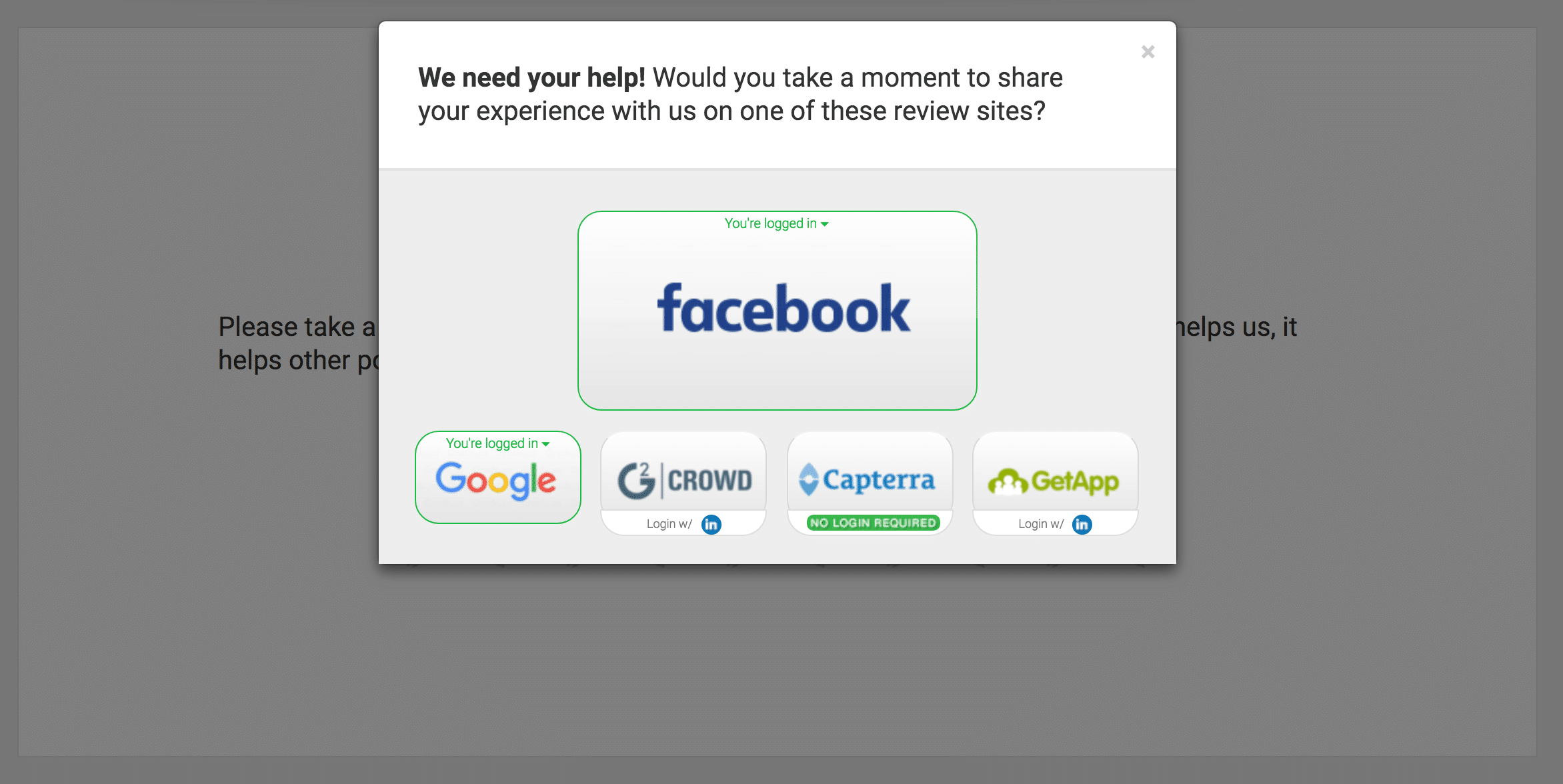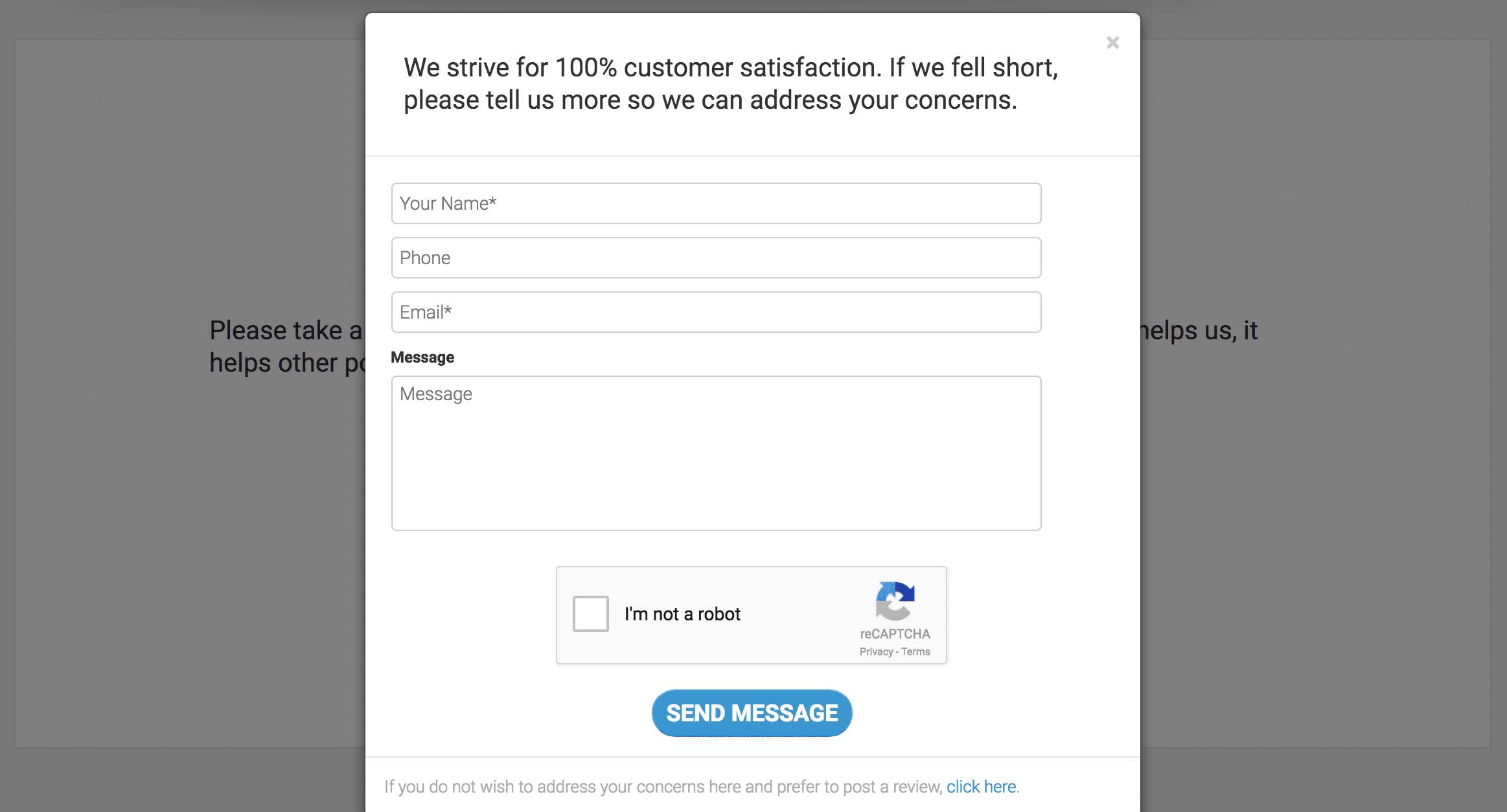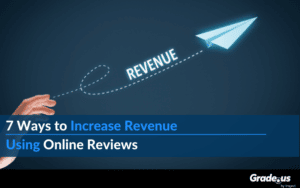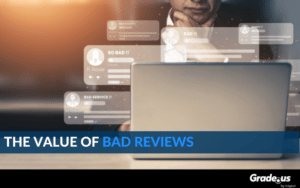You've asked your customer for a review face to face.
You did everything you were supposed to do. They're really happy with you, but your customer has decided to blow you off.
What do you do?
Is it worth it to send a reminder or are you more likely to come off as a pest? Will asking hurt the customer relationship?
Your customers are ignoring you on purpose
Certainly feels that way doesn't it? But more often than not, it's something else. Your customers forgot about your request, they don't know what to say and they're embarrassed, they don't want it to eat up their time.
Here's the bad news.
You absolutely will come off as an annoying pest if your email cadence is executed in the wrong way.
How do I know?
Persistent salespeople. You know the ones I'm talking about. The salesperson who absolutely refuses to take "No" for an answer. They "follow-up" with you relentlessly, spamming your inbox with value-less emails.
"Hey Andrew, I'm just calling to check in with you." Or, "Hi Andrew, have you had a chance to read my last four messages?"
You don't want to be that guy or girl.
But you absolutely need to follow up with your customers if you want to generate a steady stream of five star reviews. In a recent study, BrightLocal found 68 percent of customers leave reviews when asked.
The problem?
Most customers aren't being asked. To be fair, that makes all kinds of sense. Let's say you've got a penny pinching customer that's hammered you for discounts. The last thing you want is a review from that customer. Why? Because they'll attract more of their penny pinching friends!
Here's the thing.
Situations like these are the exception, not the rule.
So, what does your follow-up campaign need to include? How do you follow up with customers who haven't given you the review you're looking for? Is there a way to follow-up without motivating customers to write a bad review?
Absolutely.
Use a carefully strategized email drip campaign.
An email drip campaign is a series of emails with a specific call to action. They offer an automated way to remind your customers to complete a task without requiring your sales or support team to remember when to send out the next reminder email at a specific time.
When creating a persuasive, yet not too invasive email drip campaign, you want to make sure you're sending it out at the right time, with an appropriate amount of urgency, and with a clear call to action.
Here's an example of the default email drip campaign used on Grade.us for review acquisition:
Email #1: Sent Immediately after a transaction
Subject: [[first_name]], do you have a moment to review us?
Hi [[first_name]],
Thanks for choosing [[business name]]. I’d like to personally invite you to share your experience.
Your feedback not only helps us, it helps other potential customers. It takes only a moment and would mean the world to us:
Review Us Now [Review Funnel Link]
Andrew McDermott
Email #2: Sent 3 days after the first email
Subject: [[first_name]], just a reminder
Hi [[first_name]],
I’m just writing to follow up and see if you had a chance to complete a review of [[business_name]].
Your feedback means a lot to us—it helps us to better serve you and helps potential customers learn what we’re all about. We’ve made it easy so it will only take a moment of your time:
Review Us Now [Review Funnel Link]
Andrew McDermott
Email #3: Sent 7 days after the first email
Subject: [[first_name]], one last reminder
Hi [[first_name]],
I hope you’ll still find a moment to share your experience of [[profile_name]]. Your feedback not only helps us improve our business, it helps potential customers.
We’ve made the process quick and easy to save you valuable time:
Review Us Now [Review Funnel Link]
Andrew McDermott
Now that we have an example of an effective review request email drip campaign, we can start developing our own.
Here are 3 must have insights that you can use to create a powerful review request email drip campaign.
Strategy #1 - Send your requests at the right time
Research shows customers are more likely to convert if they've already said yes to something else.
Research from digital marketer shows customers who buy a front end offer are 10x more likely to buy a follow-up offer.
There's an important clue here.
The best time to ask customers for a review is shortly after they've purchased your product or service.
The longer you wait to request a review in your emails, the harder it is to convert customers. But, why is that?
- Customers don’t remember what you’ve done for them
- They’re not as interested or as motivated to help
- Reciprocity compulsion decreases with time
If you'd like your review requests to attract more five star reviews, you'll need to make sure your timing is picture perfect. Ask too soon and you risk coming off as self absorbed or needy. Ask too late and customers have forgotten all about you.
It's a fine line.
If you're running a service you'll probably want to wait until you've produced the results you were hired to deliver. What if you're selling a product?
The short answer is, it depends.
If you're selling a movie, game or book, it's fairly straightforward. You give customers a chance to evaluate your product then you write a review.
What about restaurants?
You give customers time to get home or at the very least situate themselves. It's tricky though, right? Which means testing is the best way to find out.Use the following metrics to measure your campaigns effectiveness.
- Opens
- Clicks
- Actions/conversions
- Unsubscribes
- Reviews
Finding the right balance is pretty straightforward as long as you’re focused on the right metrics.
Strategy #2 - Create urgency in customers
Email Drip campaigns depend on a sequence of messages. You'll need a clear idea of (a.) the kind of messages you'll send (b.) how often you'll send them and (c.) who you'll send it to.
Your email drip campaign has a limited shelf life.
Realistically, your email drip campaigns shouldn't go on for several weeks. If your customer plans on responding to your review request, it'll happen after specific triggering events. This is true in the vast majority of cases.
But why is that?
Because email response rates tend to decline over time.
Your customers are attentive and focused on what you have to say at first. Then, slowly over time, their interest declines. A gradual decrease is normal and something your campaign should account for.
But how?
You create the right email follow-up sequence. The right sequence is a mix of offers that attract and convert your customers. Your goal, in this case, is to get the review. You can accomplish that with a variety of email messages.
1. Create urgency by asking “how'd it go?”
At first glance, this seems generic. Which is exactly the route most people take. There's one simple ingredient that increases the effectiveness of this strategy dramatically.
Specificity.
Instead of asking customers: "Hey, How'd everything go?" You make your question specific. "I have three to four prospects who want to know what you think about us." Would you be willing to share your honest experience with them?
Subject: Jan, can I get your advice?
Hi Jan,
We have [3 to 4] customers asking for unbiased reviews.
We're looking for candid feedback from the top 10% of our customers (that's you). Would you be willing to share your experience with them?
It would mean so much to them.
Share your feedback here: [profile url]
Andrew McDermott
This works well if you’re already in a situation where you need to share references. You can ask existing clients for their review and continue on from there. But it also works well if you’re selling a product.
This could be as simple as calculating the average amount of prospects who are asking for reviews on a regular basis.
2. Ask customers to save you
In the right hands, a negative review can attract lots of positive reviews. But only if you know how to use them properly.
Here's how it works.
Gather a few of your worst reviews. Make a list of the problems and complaints listed in each of your reviews. The more unfair or unkind customers are to you, the better.
Next, go through each of these reviews and fix as many of the problems as you can (e.g. slow delivery, failed to get results, poor quality product, etc.)
Then, wow your new customers. Under promise and over deliver. Knock their socks off. Go above and beyond for new customers coming in.
Finally, when you're ready, you hit them with the "save us" email.
Subject: Jan, we're in trouble. We really need your help!
Jan,
We're in trouble. We really need your help.
A disgruntled customer wrote a nasty review calling our widgets garbage. He said we were frauds, pretenders trying to scam people out of their money.
You can save us.
Would you be willing to share your experience (good or bad) with everyone? You've been with us from the beginning so your honest, unbiased opinion really matters here.
Help!
Andrew McDermott
P.S. It’s okay if you can’t. We love you either way.
If you're unprepared, this message strategy is risky. If you haven't fixed the problems outlined in previous reviews this will make your problems worse. If you've done the work, your response rate is typically very high. When using this strategy, be honest and above board at all times.
Finally, use negative reviews that are less than a year old.
3. Show customers you fixed the problem
Remember those negative reviews you collected just now? You're going to reach out to the customers in your email list. You'll want to use your judgment here. Do your best to avoid customers displaying dysfunctional or toxic behavior.
You're looking for decent customers.
Found them? Good, you're ready to make your approach.
What kind of approach?
Start off by admitting you were wrong. That you failed in some way. Choose a negative review and share it with your list. Create a thoughtful response that shows (a.) you were listening to your customers (b.) the problem has been fixed for some time and (c.) that the problem has been fixed permanently.
Subject: Jan, we failed you...
Jan,
On [date], a customer shared a negative review about us. They said our [product] failed to perform at peak capacity like we promised.
I'm sorry to say they were right.
I'm sorry we let you down. Here's how we made things right.
[Two days] after that review, we began working on a permanent fix, which we finished [four days later]. That fix has been live for the last month but we need one more thing to make this right.We need your feedback.
Have you run into any issues with [problem] at all? Would you be willing to share? (takes 2 min.)
Andrew McDermott
P.S. No worries if you can't, I thought I'd ask.
This template is vulnerable. It's an uncomfortable place to be because no one wants to admit they were wrong. Some of us do but most don't. Here's why it works.
It creates emotion.
That emotion is a trigger. It creates dialogue, builds trust and creates empathy. When combined with a gift, it plays on the Ben Franklin effect. Your customers know you're not perfect.
This shows you're willing to admit it.
When you're willing to admit it, to own your mistakes, you attract the right kind of customers. You'll attract a few detractors, that's inevitable. But you'll attract reviews from all-star customers, the ones who love your business.
Strategy #3. Segment all-stars, screen out unhappy customers
Customers aren't created equal.
You're looking for your 80/20 customers, the 20 percent that produces 80 percent of your revenue. The ideal customers who love, admire and engage with your business.
How do you find these customers?
You watch their behavior. You focus on the results of their behavior and outcomes. What is that exactly? It's anything you determine to be valuable to your business.
- Repeat customers
- Customers who spend more money, more often
- Customer evangelists who actively promote your business
- Customers who use/consume your product in greater amounts than others
- Standard-bearers. Customers who hold you to a higher standard
- High monthly, quarterly, or annual spending rates
- Customers who purchase products with a high profit margin
- Strong relationships with specific customers
It's important to identify the customers you want. Once you've identified these customers, focus your attention on them. You're not discouraging average customers from writing a review, but you're also not pursuing them either.
What about toxic customers?
Again, it's important to screen these customers out. If they're sadists, ragers or trolls - ignore them.
Okay, how do you screen these customers out?
Tag your customers. Email tools like MailChimp, ConvertKit and others allow you to tag your customers. Tag all-stars, and toxic customers accordingly. You can also tag individual visitors with Google analytics.

Tagging these customers allows you to monitor their behavior. Tailor your campaigns around your all-star customer's wants and needs. Minimize interaction with toxic customers who are more interested in stirring up trouble.
Next, tailor your emails to their behavior and outcomes.
- Repeat customers? Mention that, explaining why their opinion matters more
- Have a strong relationship with specific customers? Show them that they know things about you that other customers don’t
- Dealing with standard-bearers? Ask them to explain why your product or service exceeds expectations
You can dramatically increase the conversion rates of your review requests if you have the right segmentation in place.
If you don’t have the time, resources or patience to automate and segment your happy/unhappy customers manually by yourself, the Grade.us review funnel allows your customers to segment themselves.

Direct happy customers to review your business on the sites that matter to you.

Reach unhappy customers before they badmouth you online, by guiding them to a service recovery form so you can address their poor experience internally.

The Grade.us review funnel is a great, no-hassle way to implement the segmenting you need to boost and protect your online review portfolio.
People are forgetful, and an email drip campaign can keep you top of mind
But if if you send multiple emails, will customers feel you're annoying?
That's not something you can control is it? It's more likely to be a problem if you're focused on nagging your customers. Serving is a much better option.
Because it's all about context.
Follow these three must-have tips for your review request campaigns and your conversion rates will skyrocket. Create the right email sequence, segment your audience, and communicate at the right time.
It's straightforward and easy.
Want to see a dramatic increase in your five star reviews? These must-have tips are indispensable. Going above and beyond for your customers is the starting point, but it isn't enough. Customers blow us off when they're missing context.
Create context and purpose and you'll find customers are willing and able to share.
About the Author
Andrew McDermott
Andrew McDermott is the co-founder of HooktoWin. He shows entrepreneurs how to attract and win new customers.











